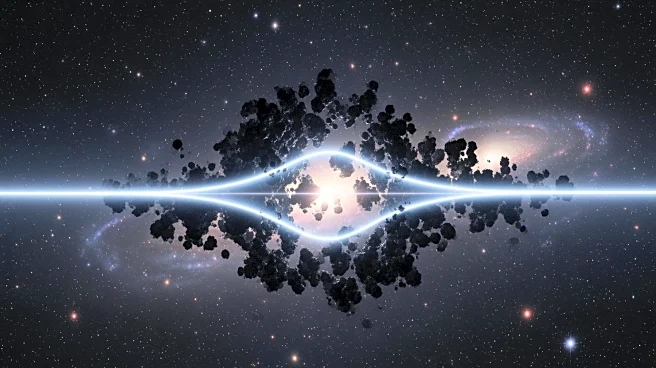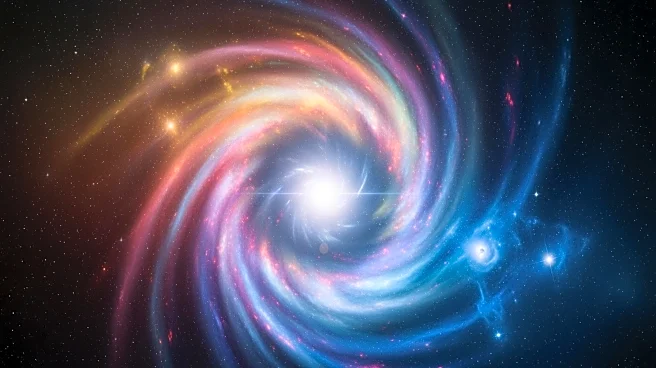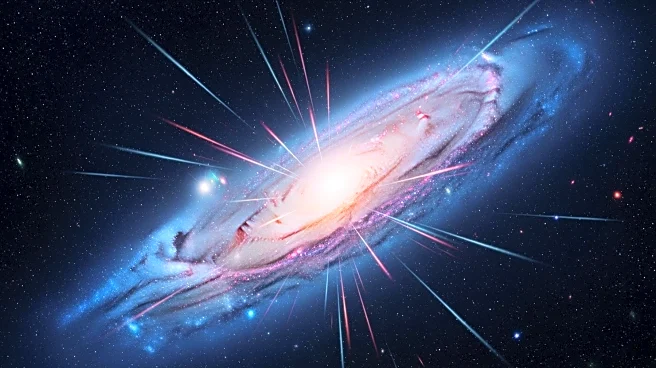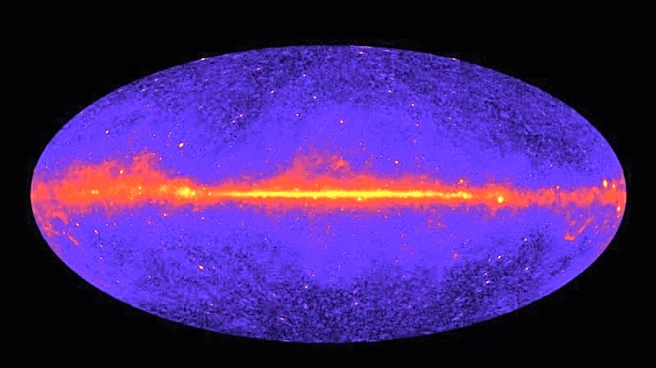What's Happening?
Scientists at the University of York have proposed a new theory suggesting that dark matter, which constitutes over 80% of the universe's matter, might indirectly affect light passing through dark matter-rich regions. The study posits that light could
acquire a faint tint, either slightly red or blue, depending on the type of dark matter it encounters. This phenomenon could occur through indirect interactions via intermediate particles like the Higgs boson. The findings suggest that if dark matter is composed of Weakly Interacting Massive Particles (WIMPs), light passing through such regions would lose high-energy blue photons first, resulting in a red tint. Conversely, if dark matter interacts only through gravity, photons would scatter differently, causing a blue shift.
Why It's Important?
This study is significant as it offers a potential method to detect dark matter, which has been elusive due to its inability to emit, absorb, or reflect light. By identifying a 'fingerprint' on light, scientists could gain insights into the composition and behavior of dark matter. This could help narrow down the search for dark matter particles and focus efforts on specific regions of the sky. The ability to detect these subtle shifts in light could revolutionize our understanding of the universe and aid in distinguishing between different dark matter models.
What's Next?
Future observatories with exceptional spectral and polarization sensitivity, such as the European Extremely Large Telescope and NASA's Nancy Grace Roman Space Telescope, could test these predictions. If confirmed, the findings would open a new observational window on dark matter, bringing scientists closer to unraveling one of cosmology's greatest mysteries.
Beyond the Headlines
The study challenges the conventional notion that dark matter is completely 'dark' and suggests that even the darkest kind imaginable could have a color signature. This could lead to a paradigm shift in how scientists approach the study of dark matter and its interactions with other cosmic elements.














